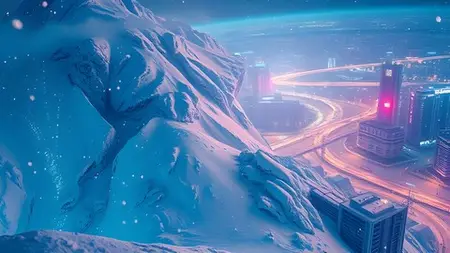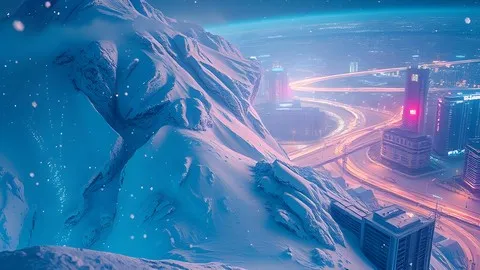Avalanche Risk Mapping With Remote Sensing In Gee
Published 8/2025
MP4 | Video: h264, 1920x1080 | Audio: AAC, 44.1 KHz
Language: English | Size: 445.20 MB | Duration: 1h 0m
Published 8/2025
MP4 | Video: h264, 1920x1080 | Audio: AAC, 44.1 KHz
Language: English | Size: 445.20 MB | Duration: 1h 0m
Learn how to map avalanche risk zones using satellite data, terrain analysis, snow cover, and Google Earth Engine (GEE)
What you'll learn
Use Google Earth Engine (GEE) to access, process, and visualize remote sensing data for mountainous regions.
Calculate slope from DEM data and analyze terrain for avalanche risk mapping.
Process MODIS snow cover data and integrate it with terrain data to identify snow-accumulated zones.
Create and classify avalanche risk maps using multi-criteria analysis and export results for use in GIS.
Requirements
No prior experience with Google Earth Engine is required — the course will guide you step-by-step.
Description
Avalanches pose serious threats to lives, infrastructure, and ecosystems in mountainous regions around the world. In this course, you'll learn how to harness the power of Remote Sensing and Google Earth Engine (GEE) to map and analyze avalanche-prone zones using satellite-based snow cover and elevation data.Designed for beginners and intermediate GIS users, the course guides you step-by-step through the process of using terrain slope derived from DEM (Digital Elevation Model) and snow cover data from MODIS to identify areas at risk. You will write JavaScript code in the GEE Code Editor, visualize high-resolution maps, classify avalanche risk into low, medium, and high levels, and export your results for use in reports or GIS software.We’ll cover topics like:Terrain modeling and slope extractionUsing MODIS NDSI snow cover dataBoolean logic for risk zone mappingVisualization techniques with custom color palettesExporting maps as GeoTIFFsBy the end of this course, you’ll have the tools and knowledge to perform avalanche risk analysis independently, making this course ideal for students, disaster risk managers, researchers, or environmental planners.No prior coding or remote sensing experience is required—just a passion for geospatial data and a willingness to learn.Prepare to build real-world mapping skills with global impact—right in your browser using Google Earth Engine.
Overview
Section 1: Introduction
Lecture 1 Lecture 1: Fundamentals of Remote Sensing for Environmental Risk Assessment
Lecture 2 Lecture 2: Remote Sensing Techniques for Hazard and Risk Mapping
Lecture 3 Lecture 3: Introduction to Google Earth Engine (GEE) for Remote Sensing Analysis
Lecture 4 Lecture 4: Understanding MODIS Satellite Bands and Spectral Resolution
Lecture 5 Getting Started with the Google Earth Engine Interface
Lecture 6 Lecture 5: Implementing Avalanche Risk Mapping in GEE
Students, researchers and professionals in agriculture, environmental science, geography, or remote sensing looking to apply satellite data in real-world scenarios.



